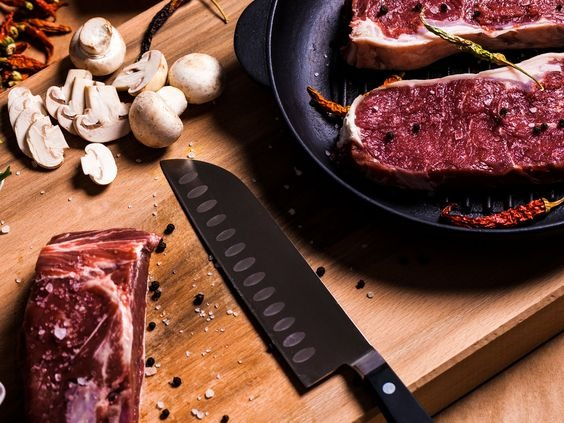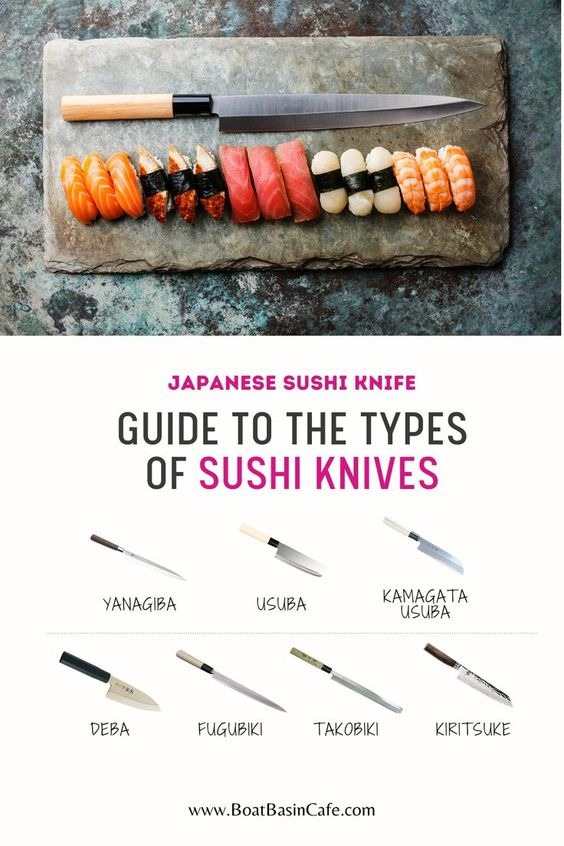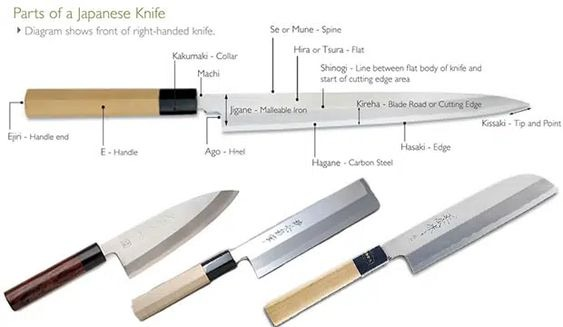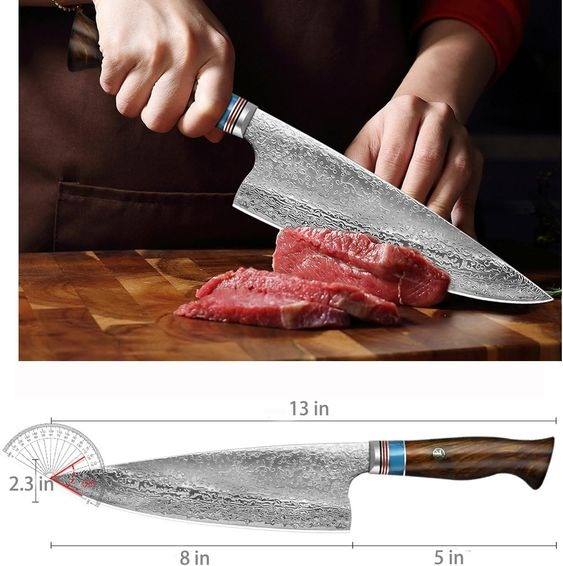The Ultimate Guide to Sushi Knives - Types and Maintenance

Nowadays, the kitchen world is all about sushi and its enthusiasts, and we are living in it. This Japanese dish is all about modern cuisine, delicate vegetables, and fine bite-size pieces of art. But have you ever tried making sushi rolls by yourself and found it struggling to get your hands on it because of its highly commanding skill, which is to use a sushi knife that is more like a Japanese katana?
So, no more struggling! Go through our comprehensive guide to know everything about sushi knives. Let's get started!
What Are Sushi Knives?
Sushi knives are the Japanese traditional-style knives. It is often regarded as a samurai sword due to its long blade length and tough knife blade. They come with single-beveled edge retention. One side involves the sharpened shiny edge for cutting purposes, while the other remains flat to ensure food doesn't stick to the knife surface. Professional chefs use it mainly to break down and slice the fish into individual pieces or to make a sushi roll.
Difference Between Sushi Knives and Other Knives
|
Feature |
Sushi Knives |
Other Knives |
|
Purpose |
Precise slicing of raw fish. |
Varied kitchen tasks. |
|
Blade |
Long, narrow, single-bevel. |
Varied shapes, typically double-bevel. |
|
Maintenance |
High, with careful sharpening. |
Lower, less specialized. |
|
Material |
High-carbon steel for sharpness. |
Various, including stainless steel. |
|
Use |
Specialized in sushi and sashimi. |
General kitchen use. |
Different Types of Sushi Knives

Due to the versatility of sushi knives, they come in different types for multiple purposes. Below listed are the most commonly used types of sushi knives:
Yanagiba
Yanagiba is extremely sharp and the most commonly used of all the types. It looks like a Japanese sword due to its willow leaf-like slim blade. Its specialty is a long, narrow, rigid blade essential for slicing and filleting boneless fish. Yanagiba comes in multiple blade lengths ranging between 200 - 350mm, which are highly required to cut the fish in a lone motion and maintain the delicate flavor and texture of the raw fish for sushi and sashimi dishes.
Takohiki
Another type of sushi knife is the takohiki. It is also a variation of yanagiba due to multiple similarities. It comprises a long, straight blade and square-off tip, which differs from yanagiba's curved edges. Takohiki serves the unique purpose of slicing the octopus tentacles due to its great edge retention, while its square tip raises and shifts those sliced pieces into the serving dish.
Fuguhiki
Just like the above two types, fuguhiki also serves a unique purpose. It has a narrow blade as compared to the Yanagiba knife. Its thinner blade serves the specific purpose of cutting the ultra-thin slices of the fugu (blowfish).
How to Choose the Right Sushi Knife

Now comes the most hectic part of deciding the best suitable knife for yourself. Here is the step-by-step guide on how you can choose the right sushi knife:
-
The topmost priority should be to look out for a stain-resistant knife and the best steel type.
-
It should be made of two materials: heavier blade and carbon steel.
-
It should have a precise, sharper edge and superior edge retention.
-
Knife blades should be tough and narrow enough to cut your meat accurately without creating a mess. You can visit Sakuto Knife to learn about traditional Japanese knives.
How to Maintain Sushi Knives?
Even if your filet knife has carbon steel or any other Japanese steel, frequently using your carving knife for cutting and slicing can give rise to stains, and spots on the blade can mess up your cutting process and squish your meat. To avoid these marks, go through our comprehensive approach.
Clean after each use
The foremost step to avoid dirt is to wash the slicing knife with your hands every time after use. Clean and wipe the cutting edge properly with a soapy cleaning agent and normal boiling water to ensure no stains are left behind.
Dry thoroughly
After washing it correctly, dry it with a towel. Never use an air dryer or any other technique, as it can cause the steel to rust.
Sharpen regularly
After cleaning, ensure the edges of the blade are sharp and narrow enough to serve the purpose. If you are a professional chef, sharpen your Japanese blades once a month. If you are a home cook and use it casually, then twice a year should be more than enough to maintain the blades.
Store properly
Lastly, you should store your knife properly to maintain its credibility. Either you build a knife guard in your kitchen or put your knife in a knife roll. It could contaminated with poisonous bacteria if left stranded.

FAQs
What Is the Best Sushi Knife for Beginners?
The best sushi knife for beginners is a Yanagiba. It is a widely used Japanese knife. Its long, narrow, and sturdy blade can push cuts to break down the fish in a single motion and slice the boneless fish to preserve the texture of the raw fish for sushi and sashimi dishes.
How Do I Maintain My Sushi Knife?
You should maintain your sushi knife by washing it with a detergent to clean all stains and dirt spots, and dry it with the help of a towel or a cloth. Afterward, store it in a knife guard or knife roll to keep your blades hygienic and pathogen-free.
Can I Use a Sushi Knife for Other Kitchen Tasks?
You can use a sushi knife for other kitchen tasks apart from cutting fish, like on meats and large roasts. But remember, it is not advised to use anything other than raw fish. Since it differs from normal (chef's knife), its hard steel and narrow blades are not designed to deal with bones.
Where to Buy Sushi Knives
Hopefully, this ultimate guideline full of very specific instructions has enough information for you to be a sushi chef. So, take out your cutting board and start preparing sushi rolls using this versatile knife!
Now it is time to get these Japanese kitchen knives and the best blade type. Check out the Sakuto knife set at affordable prices to prepare some Japanese food. Our knives are made up of carbon steel, which is the ideal quality for the best knife, giving it an edge over white steel or German steel in terms of care and rust.
Shop now to get your hands on high-durability sharp edge knives and we guarantee you won't be disappointed.
Explore our collection to learn more!






